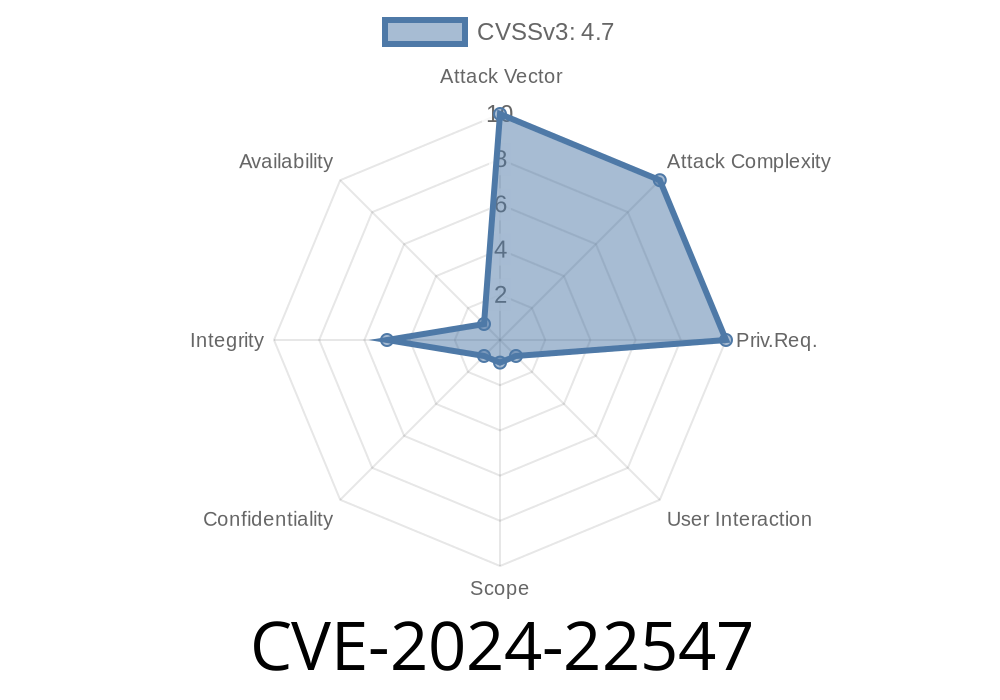A new vulnerability, identified as CVE-2024-22547, was recently discovered in WayOS IBR-715 firmware versions below 17.06.23. This Cross-Site Scripting (XSS) vulnerability is a widespread web application security flaw, which allows attackers to inject malicious scripts into webpages viewed by users. The potential impact of this vulnerability is severe, as it can lead to session hijacking, phishing attacks, and potentially even remote code execution.
In this post, we will be discussing the details of the CVE-2024-22547 vulnerability, including the code snippet that allows for exploitation, links to original references, and potential mitigation strategies.
Code Snippet
The vulnerability in WayOS IBR-715 stems from improper sanitization of user input in the web interface. Here is a code snippet that demonstrates the vulnerability:
<script>
var payload = "<img src=x onerror='alert(1)'>";
document.getElementById("vulnerable_field").innerHTML = payload;
</script>
In this example, the attacker injects a
HTML tag into the user input field (vulnerable_field), which triggers the "onerror" event when the image fails to load. The malicious script executed within the onerror event, "alert(1)", demonstrates the potential for XSS.
Exploit Details
An attacker can exploit this vulnerability by crafting a URL with a malicious payload that exploits the vulnerability in the WayOS web interface. By distributing the malicious URL to targeted users and convincing them to click on the link, the attacker can execute arbitrary JavaScript code in the context of the user's browser.
Here are some original references that provide further details about this vulnerability
1. WayOS IBR-715 <17.06.23 Cross-Site Scripting (XSS)
2. CVE-2024-22547 - Mitre CVE Entry
3. NVD - Vulnerability Details
Mitigation Strategies
It is strongly recommended for users to upgrade their WayOS IBR-715 firmware to version 17.06.23 or later, which contains the fix for this vulnerability. Additionally, administrators should regularly check for security updates and patches to ensure their system is protected against known vulnerabilities.
In the meantime, users can use some of the following best practices as a temporary mitigation strategy:
1. Enable a Content Security Policy (CSP): This policy helps prevent XSS attacks by restricting the sources from which content can be loaded, effectively blocking attackers from loading malicious scripts.
2. Sanitize user input: Ensure that all user input is properly sanitized before it is processed by your application.
3. Use secure coding practices: Follow secure coding practices to minimize the chance of introducing vulnerabilities in your application.
4. Educate users: Make sure your users are aware of potential phishing attacks, encouraging them to be cautious about clicking on suspicious links and opening unknown files.
Conclusion
The discovery of CVE-2024-22547 highlights the importance of staying up-to-date with security patches and updates, as well as implementing robust security measures to protect against web application vulnerabilities. By understanding the nature of this vulnerability, organizations can take the necessary steps to mitigate its impact on their systems, ensuring the safety of user data and the overall security of their applications.
Timeline
Published on: 02/22/2024 19:15:08 UTC
Last modified on: 08/14/2024 16:35:04 UTC
